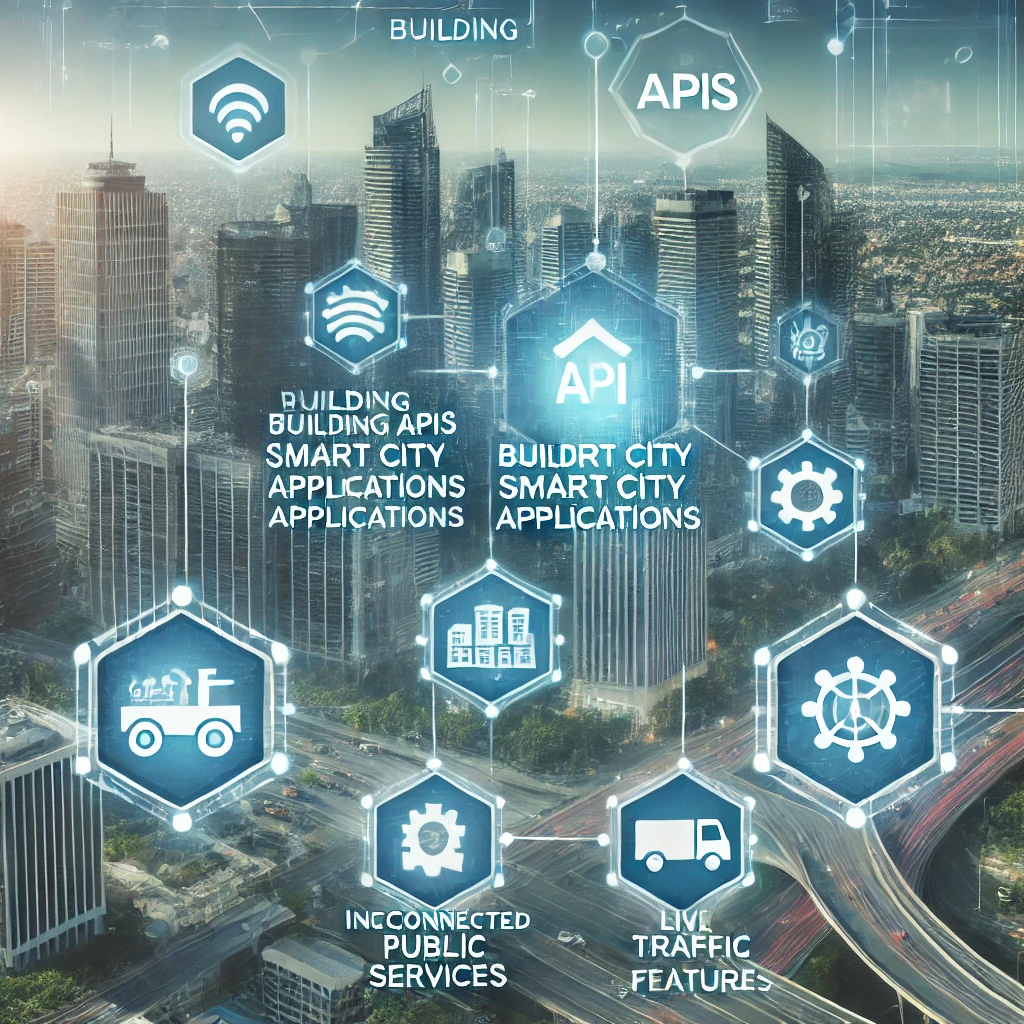Building APIs for Smart City Applications with Syncloop Features

Why APIs are Essential for Smart City Applications
APIs play a critical role in smart city systems by enabling:
- Real-Time Data Sharing: Facilitate instant communication between IoT sensors, analytics platforms, and decision-makers.
- System Integration: Connect diverse technologies and platforms, such as traffic management, public safety, and energy grids.
- Scalability: Handle growing data and user demands as smart city infrastructure evolves.
- Enhanced Citizen Services: Support applications for public transportation, waste management, and utilities.
- Improved Decision-Making: Enable predictive analytics and automation for efficient resource management.
Syncloop simplifies these tasks with tools for workflow automation, real-time data processing, and secure communication.
Key Features of Syncloop for Smart City APIs
1. Dynamic Workflow Automation
Automate processes like data aggregation, analysis, and notifications to enhance efficiency.
2. Real-Time Processing
Enable low-latency data handling for critical applications like traffic signals and emergency response systems.
3. Scalable Infrastructure
Manage high volumes of data and API requests seamlessly with Syncloop’s scalable architecture.
4. Data Transformation
Standardize and enrich data from heterogeneous sources for compatibility across systems.
5. Monitoring and Analytics
Track API performance, usage, and data trends to optimize smart city operations.
6. Secure Communication
Implement robust authentication, encryption, and role-based access to protect sensitive data.
Steps to Build Smart City APIs with Syncloop
Step 1: Identify Use Cases and Data Sources
- Define the key smart city functionalities, such as:
- Traffic monitoring and management.
- Public safety systems.
- Energy and utility optimization.
- Citizen service platforms.
- Identify data sources, including IoT sensors, legacy systems, and third-party platforms.
Step 2: Configure API Endpoints
- Create endpoints for core functionalities, such as:
- /traffic/data for real-time traffic updates.
- /energy/usage for utility consumption tracking.
- /alerts/notifications for emergency alerts.
- Ensure endpoints support diverse data formats like JSON, XML, and CSV.
Step 3: Automate Data Workflows
- Use Syncloop’s workflow designer to automate tasks like:
- Aggregating sensor data from multiple sources.
- Triggering notifications for anomalies (e.g., water leakage, power outages).
- Synchronizing data with analytics platforms for visualization.
- Incorporate Transformers for data standardization and enrichment.
Step 4: Implement Real-Time Processing
- Configure workflows to handle data streams with minimal latency.
- Use Syncloop’s event-driven architecture to:
- Respond instantly to critical events, such as accidents or natural disasters.
- Update connected systems in real time for coordinated actions.
Step 5: Monitor and Optimize
- Use Syncloop’s real-time monitoring tools to:
- Track API performance and data flow.
- Analyze trends to optimize resource allocation.
- Generate alerts for anomalies or performance issues to ensure reliability.
Step 6: Secure Data and API Access
- Implement role-based access controls to restrict sensitive operations.
- Encrypt all API communications to protect citizen data and infrastructure information.
- Regularly audit API logs for compliance and security.
Real-World Applications
1. Traffic Management
- Use Case: Optimize traffic flow and reduce congestion with real-time data from connected vehicles and sensors.
- Features Used: Real-time processing, workflow automation, scalable infrastructure.
2. Public Safety
- Use Case: Integrate emergency services with APIs for faster response times and coordinated actions.
- Features Used: Event-driven workflows, secure communication, monitoring tools.
3. Energy Optimization
- Use Case: Monitor and analyze energy consumption patterns for smart grids.
- Features Used: Data transformation, real-time monitoring, API analytics.
4. Citizen Engagement
- Use Case: Provide platforms for citizens to report issues like potholes or outages and track resolutions.
- Features Used: API endpoints, workflow automation, secure data handling.
Best Practices for Smart City APIs
- Design for Scalability: Use Syncloop’s dynamic scaling to handle increasing data volumes and user demands.
- Ensure Interoperability: Use standardized data formats and APIs for compatibility across systems.
- Monitor Continuously: Use real-time dashboards to identify and resolve issues promptly.
- Prioritize Security: Protect sensitive data with encryption and strict access controls.
- Automate Workflows: Simplify complex processes with automated workflows for efficiency.
Why Choose Syncloop for Smart City APIs?
Syncloop offers a comprehensive platform for building and managing APIs tailored to smart city applications. Its robust tools for automation, real-time processing, and security make it an ideal choice for creating scalable and efficient solutions.
Conclusion
Smart cities rely on APIs to enable interconnected systems, real-time data sharing, and efficient resource management. Syncloop simplifies the development and management of these APIs, empowering cities to deliver innovative and reliable services. By leveraging Syncloop’s features, developers can create smart city applications that improve urban living and sustainability.
Back to Blogs